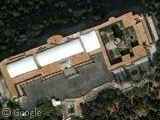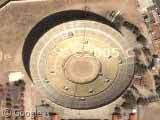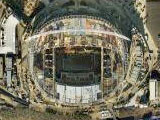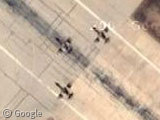Bullrings
Thursday, 3rd September 2009 by James Turnbull
Bullfighting traces its history way back to when the Romans held public spectacles of "Man vs Beast", and although France and Portugal both have long bullfight histories, it is considered a very Spanish tradition.
So it's in Spain where we start with the world's oldest surviving bullring: Las Virtudes in Santa Cruz de Mudela. It was built way back in 1641, when the bullrings were actually bullsquares - the round shape was adopted later on to prevent the action being confined to the corners.
The style of Spanish bullfighting has changed very little since 1726, when Francisco Romero got off of his horse to fight on foot with the famous red cape and sword.
This tradition was taken with the emigrants to the Americas, where the oldest remaining bullring can be dated back to 1766. By now firmly set on the round shape, Plaza de Acho in Lima, Peru accommodates 13,000 spectators.
Back in Spain, we find the second largest bullring in the world, Las Ventas in Madrid. With a capacity for 25,000 spectators, it has also been used for an AC/DC concert, and hosted a semi-final of 2008's Davis Cup tennis tournament1.
To find the largest bullring in the world, we visit what was once the most populated city on the planet: Mexico City. Here we find the gigantic La Plaza Monumental, built in 1946 with a capacity for 41,262 people.
For obvious reasons, bullfighting has drawn a lot of criticism throughout the world, and I'm surprised that these massive venues are still able to draw enough crowds to keep the tradition alive.
However, there are signs that bullfighting will not be around forever: it is no longer televised in Spain, and many opinion polls have shown the majority of the public are just not interested.
In Tijuana, Mexico we can use Google Earth's historical imagery to see before and after shots of a recently demolished bullring that wasn't pulling in enough business.
Earlier this year the city of Viana do Castelo in Portugal took the bold step of banning bullfights altogether. Their small ancient bullring will now be used as a "science and education centre". Presumably bull dissections will not be part of the cirriculum.
This entry is based on an original article from the recently re-launched Google Sightseeing Español, where new author Luis Moreno is posting translated sights from here and original Spanish-langauge content.
-
I assume there were no bulls storming around at the time, despite that probably making for a very entertaining game of tennis. ↩︎












How could you not mention
View Placemark
? 😀
Ha, you beat me to it. But what is the history of the place – I’m assuming it was just a farmers market. Looking at the GE imagery it sure has changed a lot since I lived there a couple of decades ago. It’s fun to play with the timeline feature, though that only goes back to 1999.
Welcome back chaps – great to have GSS back online. Hope you had a great holiday.
Different kind – for our overseas readers, the old English markets used to have a huge and very well-fastened iron ring in the middle to secure any bulls for sale to.
Now, you have missed the oldest fighting ring, that at Ronda
And for the antiquarians, you can sort out for yourself exactly where the bull-jumping area in Knossos was – it’s generally thought to have been in the clear area on the north of the site.
Muchos Corridas de toros
It is highly unlikely that there would be any disected bulls in Viana de Castelo, as the bulls are not killed in Portuguese bullfights; Instead, a team of ‘Forcados’ (amateur bull wrestlers) wrestle the charging bull to a standstill, before the chastened creature is let off in herd of steers, to stud; bloodied but not beaten.
The life expectancy of a Portuguese bull is therefore slightly greater than that of a Spanish bullfighter.